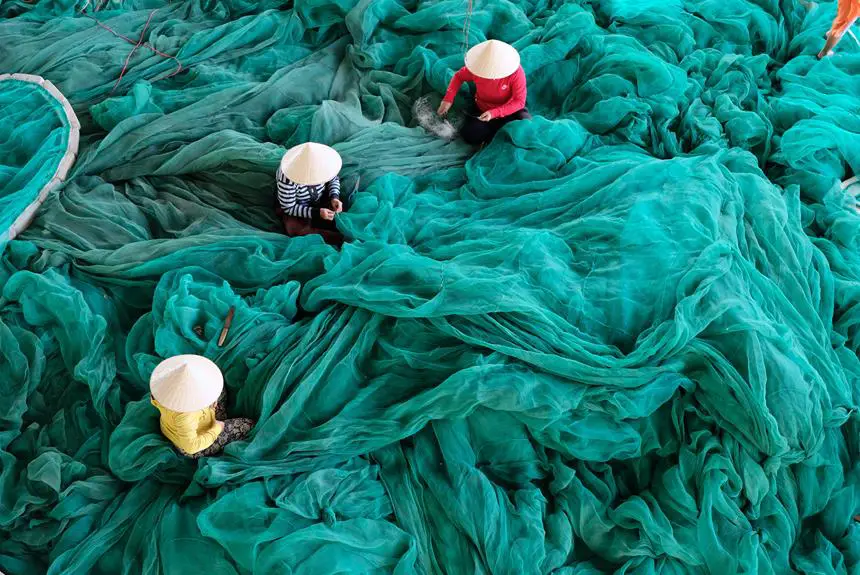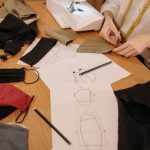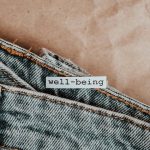If you've ever heard the saying, 'Measure twice, cut once,' then you understand the importance of preparing your fabric before sewing. Mastering the art of stabilizing fabric can make all the difference in the outcome of your sewing project.
By using these 5 essential techniques, you can ensure that your fabric stays in place, prevents stretching, and results in perfect, professional-looking stitches. Whether it's interfacing, stabilizing spray, basting, stay-stitching, or underlining, each method plays a crucial role in stabilizing your fabric for flawless sewing.
So, let's dive in and explore these 5 ways to stabilize fabric for perfect sewing and elevate your sewing skills to the next level.
Key Takeaways
- Interfacing, stabilizing spray, and underlining all contribute to stabilizing fabric for perfect sewing.
- They enhance the fabric's structure, prevent fraying, minimize stretching, and provide additional support and durability.
- Different types of interfacing can be used depending on the fabric and purpose.
- Basting and stay-stitching are techniques used to temporarily hold fabric layers together and prevent stretching and distortion.
Interfacing
To stabilize fabric and enhance its structure, you should consider using interfacing, a layer of fabric or material that's attached to the wrong side of the main fabric. There are different types of interfacing available, each serving a specific purpose in sewing projects.
Fusible interfacing, also known as iron-on stabilizer, is a popular choice as it can be easily attached to the fabric using an iron. This type of interfacing comes with a heat-activated adhesive on one side, which bonds to the fabric when heat is applied. It's convenient and provides a strong bond, ensuring the fabric remains stable during sewing and after the project is completed.
On the other hand, sew-in interfacing requires stitching to attach it to the fabric. This type of interfacing is ideal for fabrics that can't withstand high heat, delicate materials, or when a temporary bond is preferred.
Additionally, spray adhesive can also be used to attach interfacing to the fabric. This method involves spraying a thin, even layer of adhesive onto the fabric and then pressing the interfacing onto it. It offers a temporary bond and can be useful for intricate or small pieces of fabric.
Understanding the different types of interfacing and their applications will greatly improve the quality and stability of your sewing projects.
Stabilizing Spray
Consider using a stabilizing spray to improve the stability of your fabric for sewing projects. Stabilizing sprays provide a quick and effective way to prepare your fabric for cutting, pressing, and shaping. They help prevent fraying, stretching, and distortion, ensuring that your fabric stays in place during the sewing process. Here are some key benefits of using a stabilizing spray:
| Benefits | Description |
|---|---|
| Prevents fraying | Stabilizing sprays create a temporary bond that prevents the edges of the fabric from fraying. |
| Minimizes stretching | By stabilizing the fabric, sprays help minimize stretching during cutting and sewing. |
| Aids in shaping | Spraying the fabric before pressing helps to maintain the intended shape of the garment. |
| Enhances precision cutting | The stability provided by the spray makes it easier to achieve precise and accurate cuts. |
Incorporating a stabilizing spray into your fabric preparation routine can greatly improve the quality and precision of your sewing projects. Whether you are working with delicate fabrics or intricate patterns, a stabilizing spray can be a valuable tool in your sewing arsenal.
Basting
One effective way to stabilize your fabric for sewing is by using basting to temporarily hold the fabric layers together. Basting involves making temporary stitches by hand to secure the fabric layers in place before permanent sewing.
This technique is particularly useful when working with delicate or slippery fabrics that tend to shift during machine sewing. To baste your fabric, start by threading a hand-sewing needle with a contrasting color thread, as this will make it easier to remove the basting stitches later. Then, use long, loose stitches to tack the fabric layers together.
Ensure that the basting stitches are evenly spaced and aligned with the seam or edge you intend to sew. Once the basting is in place, you can proceed with machine sewing without the fabric layers shifting or puckering.
After completing the permanent sewing, carefully remove the basting stitches by gently pulling the contrasting thread out of the fabric. With a little practice, basting can become an essential tool in your sewing arsenal, ensuring precise and professional-looking results.
Stay-Stitching
When stabilizing fabric for sewing, you can also employ stay-stitching to prevent stretching and distortion of the fabric edges. Stay-stitching is a vital technique that helps maintain the shape of curved or angled fabric edges.
To execute stay-stitching, simply sew a line of stitches within the seam allowance, typically 1/8 inch from the raw edge. It's crucial to sew this line of stitches in the direction recommended for the specific pattern, as this can vary.
Stay-stitching is commonly used on necklines, armholes, and waistlines where fabric manipulation and stretching can occur during the construction process.
By utilizing stay-stitching techniques, you can ensure that your fabric retains its original shape and size, providing a stable foundation for subsequent sewing steps. This simple yet effective method is a proactive measure to prevent potential issues with fabric distortion, ultimately contributing to the overall quality of your finished garment.
Mastering the art of stay-stitching empowers you to take control of fabric manipulation and achieve impeccable sewing results.
Underlining
How can underlining fabric improve the stability and structure of your sewing projects?
Underlining is a technique that involves layering a piece of fabric underneath the main fabric before sewing. This method provides additional support, durability, and a professional finish to your garments.
Here are some essential tips for underlining fabric to enhance your sewing projects:
- Fabric Preparation: Select a lightweight, closely-woven fabric for underlining that complements the main fabric. Pre-wash and press both fabrics before layering them together.
- Sewing Techniques: Pin the main fabric and underlining together, treating them as one piece of fabric. Use basting stitches or fabric adhesive to secure the layers before sewing.
- Fabric Handling: Handle the underlined fabric carefully to prevent shifting during the sewing process. Use sharp scissors to trim excess underlining fabric from seam allowances.
- Sewing Tips: When underlining complex garment pieces, mark all notches, darts, and pattern details on the underlining fabric to ensure accurate construction.
Frequently Asked Questions
Can I Use Interfacing as a Stabilizer for Stretchy or Slippery Fabrics?
Yes, you can use interfacing as a stabilizer for stretchy or slippery fabrics. However, if you're looking for alternatives, consider using knit stay tape or spray starch for stabilizing techniques that work well.
Are There Any Alternatives to Stabilizing Spray for Those With Sensitivities to Aerosol Products?
If you have sensitive skin or allergies, consider non-aerosol fabric stabilizing alternatives. Try using fabric preparation methods like stay stitching, basting, or using sew-in stabilizers. These options can help achieve the perfect sewing results.
When Is Basting Necessary for Stabilizing Fabric, and When Can It Be Skipped?
When stabilizing fabric, basting techniques are necessary for stretch fabric and fabric manipulation. It can be skipped for woven fabrics. Incorporate basting for precision in sewing techniques, ensuring perfect fabric stabilization for your project.
How Does Stay-Stitching Differ From Other Methods of Stabilizing Fabric, and When Is It Most Beneficial to Use?
When stay-stitching, you secure the fabric's edges to prevent distortion during handling. This technique is beneficial for curved or bias-cut pieces, minimizing stretching and maintaining shape. It's crucial for fabric manipulation, ensuring precise sewing results.
What Are the Differences Between Underlining and Other Methods of Stabilizing Fabric, and When Is Underlining the Best Choice?
When comparing stabilizing techniques, underlining offers benefits like adding strength and structure. It differs from other methods by providing a seamless finish. Underlining is best for delicate fabrics or when you want to enhance the fabric's properties.
- Recycling Nonwoven Fabrics: Is It Possible? - July 11, 2025
- Recycling Nonwoven Fabrics: Is It Possible? - July 11, 2025
- Recycling Nonwoven Fabrics: Is It Possible? - July 11, 2025







